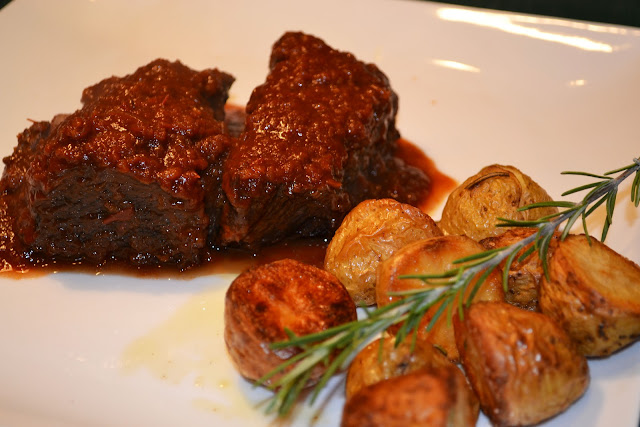Tigelle
Modena is located in Emilia Romagna, known as the culinary bread basket of Italy. Tigelle are the quintessential food of Modena, a symbol of pride. So, what are tigelle? Simply put, they are a disc shaped bread, about the size and shape of an English muffin. The similarities stop there. Once baked, tigelle have a soft center, and a crisp crust. To be eaten, they are split open with a knife, then filled in a variety of ways. Below are some of the most common ways to enjoy tigelle:
-with pesto modenese (see recipe below)
-with thinly sliced Parma prosciutto nothing more
-with your favorite salumi, coppa, soppresata, bresaola, et. al
-with stracchino (or another creamy cheese, like brie), arugala, and grated parmesan cheese
-with nutella for dessert
In Modena, many people own a cast iron tigelliera (see photo) to make their tigelle stovetop. It is also common there to have an electric tigelliera cooking device. In the United States, you can buy your tigelliera in Modena and bring it back, or you can also use your griddle on the stove top. Don't worry, your results will still be satisfying.
Before you can eat amazingly delicious tigelle, you have to make the dough. The quantities for this recipe makes about 20 tigelle.
Ingredients for tigelle dough:
2 teaspoons of dry active yeast
1 cup warm water (some people prefer to use warm milk)
pinch of sugar
pinch of flour
3 1/4 cups flour
2 tablespoons of olive oil
2 tsp salt
In a small bowl, combine the warm water, yeast, pinch of flour and salt. Stir gently, and let rest for about 10 minutes, or until the mixture becomes bubbly.
You can make the dough by hand, I prefer to use my stand mixer. In the mixing bowl, combine the flour, olive oil, salt, and the yeast mixture. Mix first with the paddle attachment, then use the dough hook at medium speed, until the dough becomes nice and smooth and elastic. Knead by hand for a few minutes, forming it into a ball shape. Then lightly oil your mixing bowl, and coat your dough. Cover the mixing bowl with a cloth, and allow the dough to rise for at least 2 hours.
Once your dough has risen significantly, punch it down. Then divide the dough into twenty balls. They should be about 1 1/2 inches in diameter. Then, using your rolling pin, roll them into discs about the size of an English Muffin. They should be about 3 1/2 inches in diameter, and about 1 cm thick. At this point, let them rise another 45 minutes to an hour.
Now your are ready to cook your tigelle. Assuming you do not have a tigelliera from Modena, heat your griddle or a skillet over medium low heat for about 10 minutes. Put a little olive oil in the griddle, and spread it around. Now cook the tigelle side by side on the griddle for about 5 minutes on each side. Tigelle are best eaten hot off the stove top, but if you need to, you can keep them warm covered in a cloth in a bread basket, or keep them warm your oven heated to about 200 degrees. I recommend eating them immediately.
So, your tigelle are made, you now get to fill them with your favorite ingredients.
One of the more traditional ways is with "pesto Modenese".
To make pesto modenese:
Traditionally, one would use about 1/4 cup very high quality lard. I have rendered my own bacon fat, and the results were really good. In the absence of this, you can use 6 ounces of pancetta, minced very finely. Combine this with 1 clove minced garlic, and 1 tsp finely chopped rosemary, and a 1/2 cup parmigiano reggiano cheese. Mix all the ingredients together until they are homogeneous. That's it! When the tigella is nice and hot, split it open with a sharp knife, and spread the pesto. The pesto will just begin to slightly melt, and it will be heavenly.
Besides the most traditional pesto modenese, try more tigelle with any of the other above mentioned combinations. They all have their own appeal. Do not forget to save room for the final tigella of the night, which must include a generous serving of nutella. Nothing is more gluttonous!
Tigelle can be the main and/or only course. They also pair very well with gnocco fritto, another culinary pride and joy of Modena. (coming soon to mangiandobene.) As for wine, the by far superior choice has to be the lambrusco. I STRONGLY recommend making the extra trip to the wine shop for a higher quality lambrusco, not the ultra sweet one that is found at every grocery store. Lambrusco is a lightly sparkling red wine, and it is never missing at any true tigellata. Invite over lots of friends that enjoy eating amazing food, and have your own tigellata. Enjoy!!!


looks great. I was looking for such a provision. greet
ReplyDeleteI write a blog featuring humorous takes on any and all food and drink subjects. I found you after having been told by Marcella Hazan about tigelle. Here is a link to your post in my own at: http://acookycat.blogspot.com/2011/05/borlengo-with-vegetarian-twist-not-far.html
ReplyDeleteBest Wishes,
David Wronski (for Cooky Cat)
I used to eat these in the mountains around Modena, and would love to make them here, but can't buy a tigelle pan anywhere. It would make it a bit expensive if I had to fly out to Modena just to by a pan!!
ReplyDelete